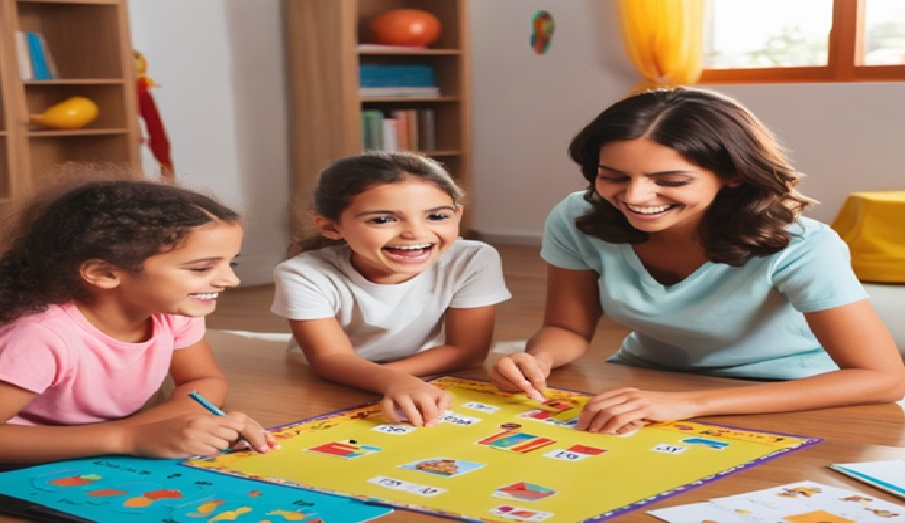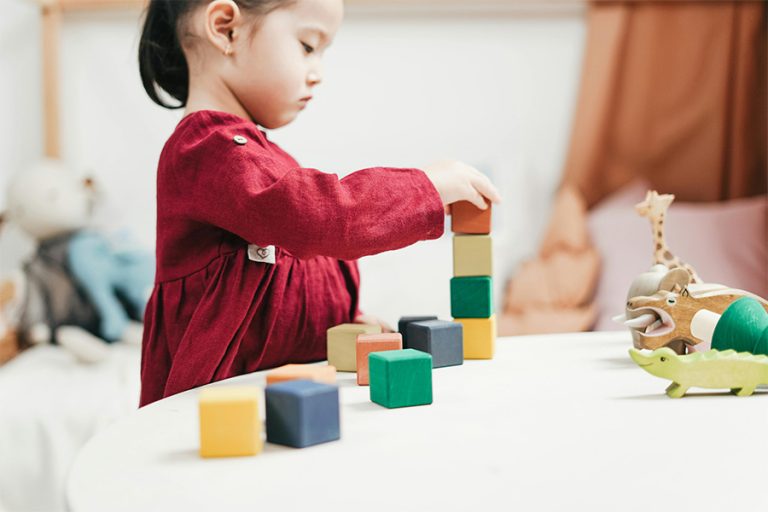Teaching Spanish to kids at home can be a fun and enriching experience for both children and parents. As children are naturally curious and quick learners, incorporating Spanish into everyday activities allows them to absorb the language while having fun.
From interactive games to playful songs, you can easily turn your home into a vibrant language-learning environment. In this guide, we’ll explore 15 exciting and effective ways to make learning Spanish a natural part of your child’s day, fostering a love for languages that will stay with them for years.
1. Turn Everyday Objects into Learning Tools
One of the easiest ways to immerse kids in Spanish is by labeling everyday objects around the house. Use sticky notes or index cards with Spanish words and place them on items such as “puerta” (door), “mesa” (table), and “ventana” (window). Encourage your child to read them aloud and use them in sentences. This constant visual exposure helps reinforce vocabulary naturally.
2. Play Spanish Songs and Nursery Rhymes
Music is a powerful tool for language learning. Play Spanish songs and nursery rhymes throughout the day, especially during playtime, car rides, or bedtime. Classics like “Los Pollitos Dicen” and “Cabeza, Hombros, Rodillas y Pies” introduce kids to new words in a fun, rhythmic way. Encourage them to sing along and dance to make learning even more engaging.
3. Introduce Spanish Storytime
Reading books in Spanish is an excellent way to boost vocabulary and comprehension. Choose bilingual books or simple Spanish picture books such as Oso Pardo, Oso Pardo, ¿Qué Ves Ahí? by Eric Carle. Take turns reading aloud, and use expressive voices to make the story more entertaining. Ask questions in Spanish to engage your child, such as “¿Qué color es el oso?” (What color is the bear?).
4. Watch Spanish Cartoons and Movies
Visual storytelling helps kids associate words with actions. Introduce Spanish-language cartoons like Dora la Exploradora or Pocoyó. If your child has favorite movies, switch the audio to Spanish with English subtitles. Watching familiar stories in a new language makes comprehension easier and keeps kids engaged.

5. Use Flashcards and Memory Games
Flashcards are a simple yet effective way to reinforce vocabulary. Create cards with pictures and words in Spanish, covering topics like colors, animals, and emotions. Play memory-matching games where your child finds pairs of words and pictures. Interactive games make learning enjoyable and reinforce retention.
6. Cook a Spanish-Inspired Meal Together
Food is a wonderful way to introduce culture and vocabulary. Cook a Spanish or Latin American dish together, like tacos, empanadas, or churros. As you prepare the meal, use Spanish phrases: “Mezcla la harina” (Mix the flour), “Corta las verduras” (Cut the vegetables), and “Sirve la comida” (Serve the food). Mealtime conversations in Spanish make learning natural and meaningful.
7. Have a “Spanish Word of the Day” Board
Choose a Spanish word each day and display it on a small board or piece of paper. Encourage your child to use that word in a sentence throughout the day. For example, if the word is “feliz” (happy), they could say “Estoy feliz porque jugué en el parque” (I am happy because I played in the park). Repeating words in different contexts improves retention.
8. Engage in Spanish Role-Playing Games
Role-playing allows kids to practice Spanish in real-life situations. Pretend to visit a restaurant where your child is the waiter and you are the customer. Use phrases like “¿Qué quiere comer?” (What would you like to eat?) and “La comida está deliciosa” (The food is delicious). Other fun scenarios include a grocery store, doctor’s office, or travel adventure.
9. Play Outdoor Spanish Games
Take language learning outside with classic Spanish games like La cuerda (jump rope) while chanting numbers or colors in Spanish. Play Simón dice (Simon Says) to practice action words: “Salta” (Jump), “Corre” (Run), and “Toca tu cabeza” (Touch your head). Movement-based learning helps kids remember vocabulary better.
10. Make DIY Spanish Learning Crafts
Crafts provide a hands-on way to reinforce Spanish vocabulary. Create a simple weather chart with words like “soleado” (sunny), “nublado” (cloudy), and “lluvioso” (rainy). Have your child make flashcards, decorate a Spanish alphabet poster, or design a collage of animals labeled in Spanish. These activities make learning interactive and visually appealing.
11. Set Up a Spanish Scavenger Hunt
Organize a scavenger hunt where your child finds objects based on Spanish clues. Say “Encuentra algo rojo” (Find something red) or “Busca un libro” (Find a book). This game encourages active listening and word association, making learning fun and engaging.
12. Write and Illustrate a Spanish Storybook
Encourage creativity by helping your child write and illustrate a simple story in Spanish. Start with basic sentences like “El gato es negro” (The cat is black) or “Ana juega en el parque” (Ana plays in the park). This activity reinforces writing skills and allows kids to express themselves in Spanish.
13. Celebrate Spanish-Speaking Holidays
Immerse your child in Spanish culture by celebrating holidays like Día de los Muertos (Day of the Dead) or La Tomatina. Learn about traditions, make crafts, or cook traditional dishes. Understanding the cultural context of a language makes learning more meaningful.
14. Use Spanish in Daily Routines
Incorporate Spanish into your child’s everyday activities. During morning routines, say “Buenos días” (Good morning) and “Cepíllate los dientes” (Brush your teeth). At bedtime, say “Dulces sueños” (Sweet dreams). Small daily interactions in Spanish help reinforce learning effortlessly.
15. Make It a Family Experience
The best way to keep kids motivated is to make Spanish a family adventure. Set up Spanish-only times during meals or weekend outings. If you’re not fluent, learn alongside your child. Show excitement about new words and phrases to make language learning a shared experience.
Final Thoughts
Learning Spanish at home doesn’t have to feel like a classroom lesson. By incorporating music, games, crafts, and everyday conversations, you can create a fun and engaging environment where your child naturally absorbs the language. The key is consistency and enthusiasm—before long, your child will be speaking Spanish with confidence!
















